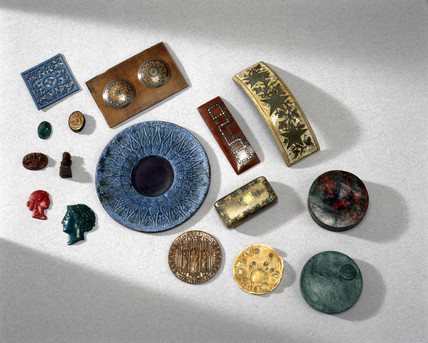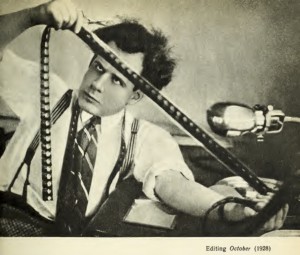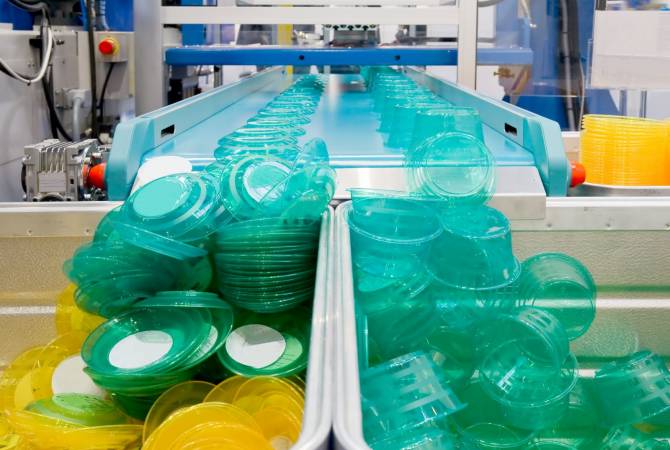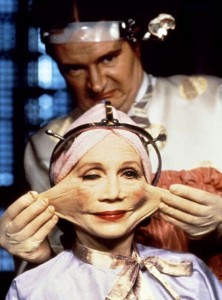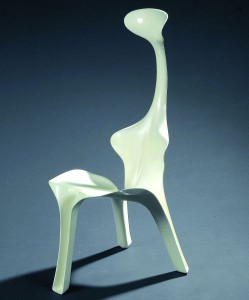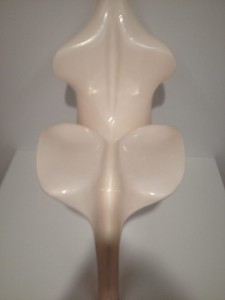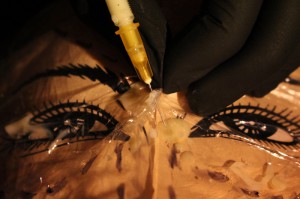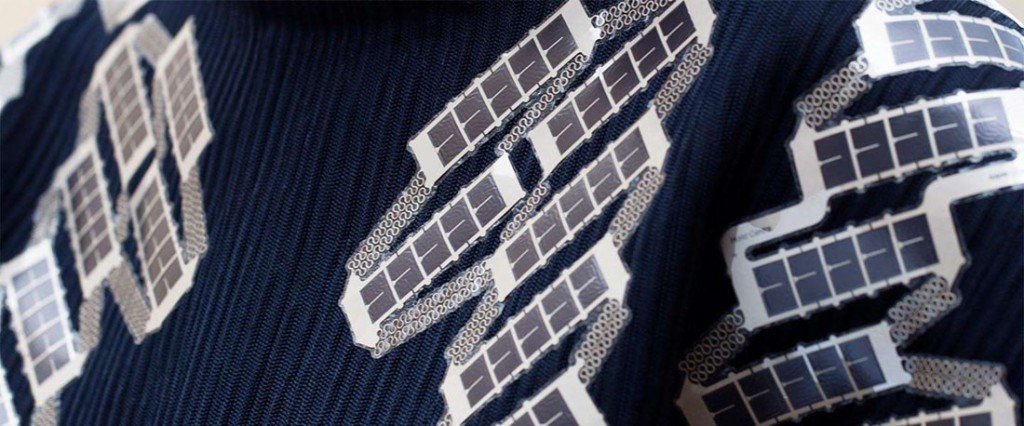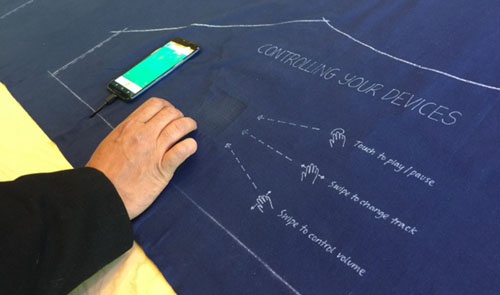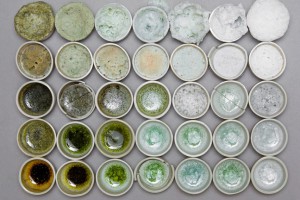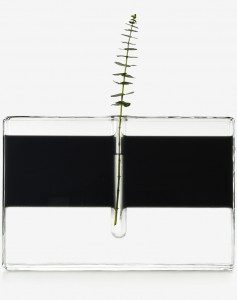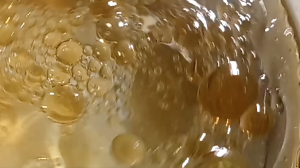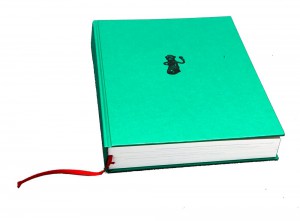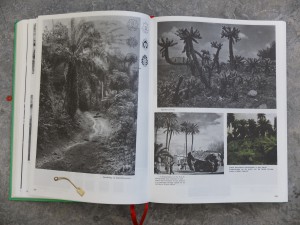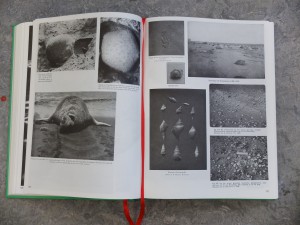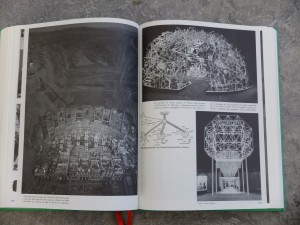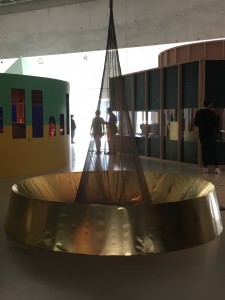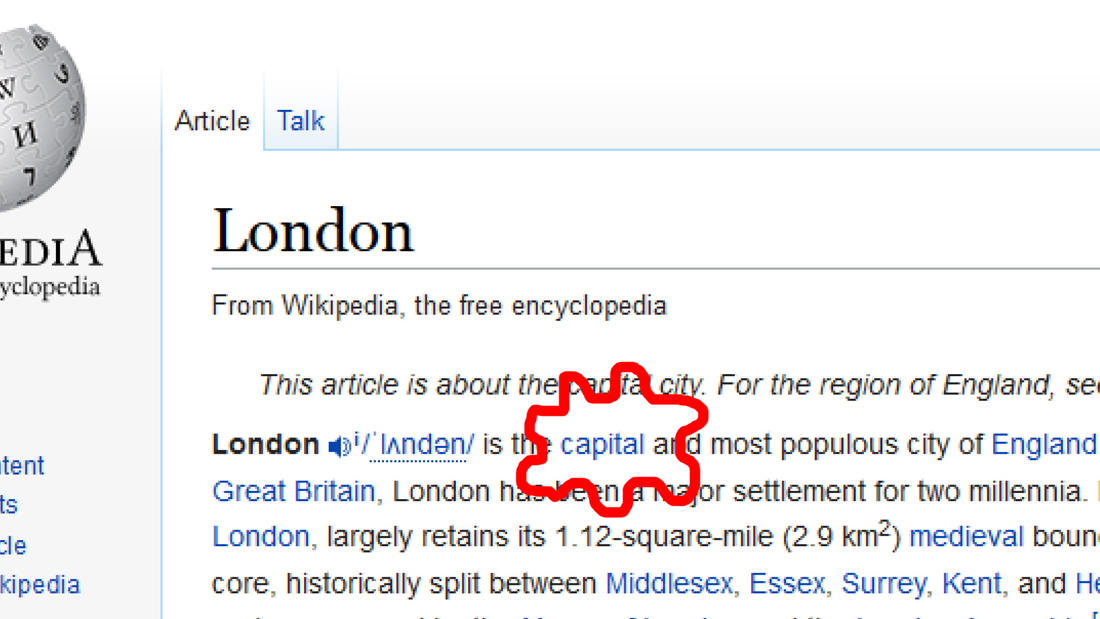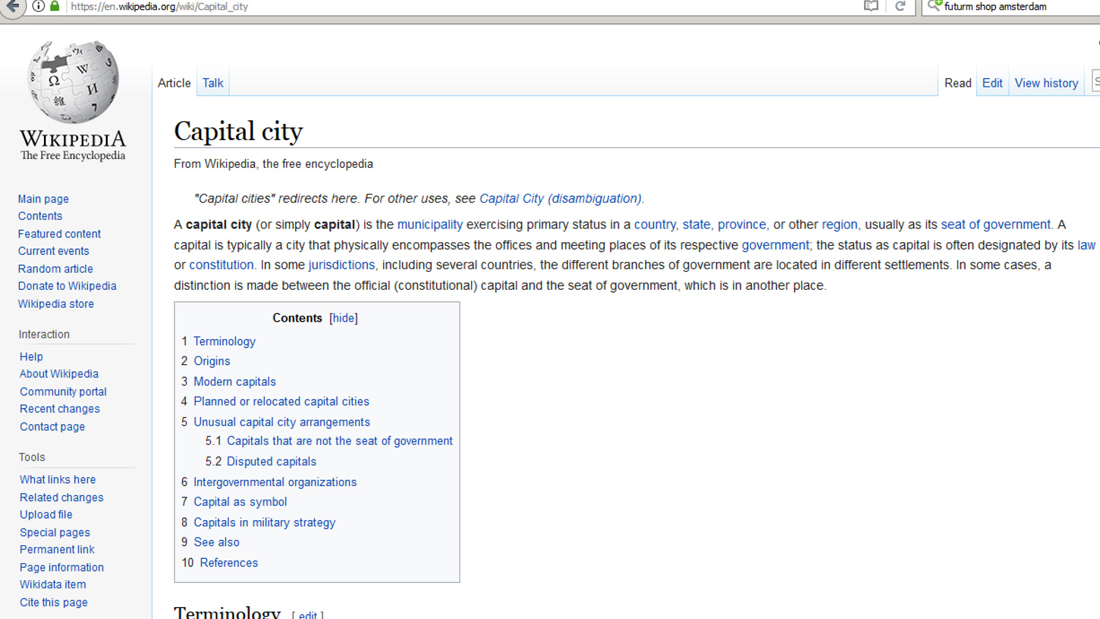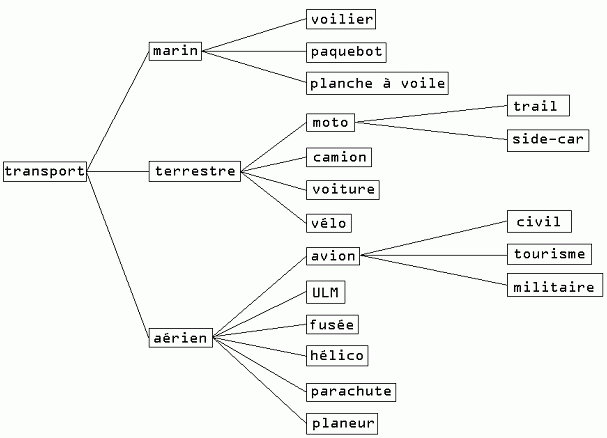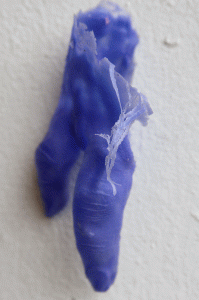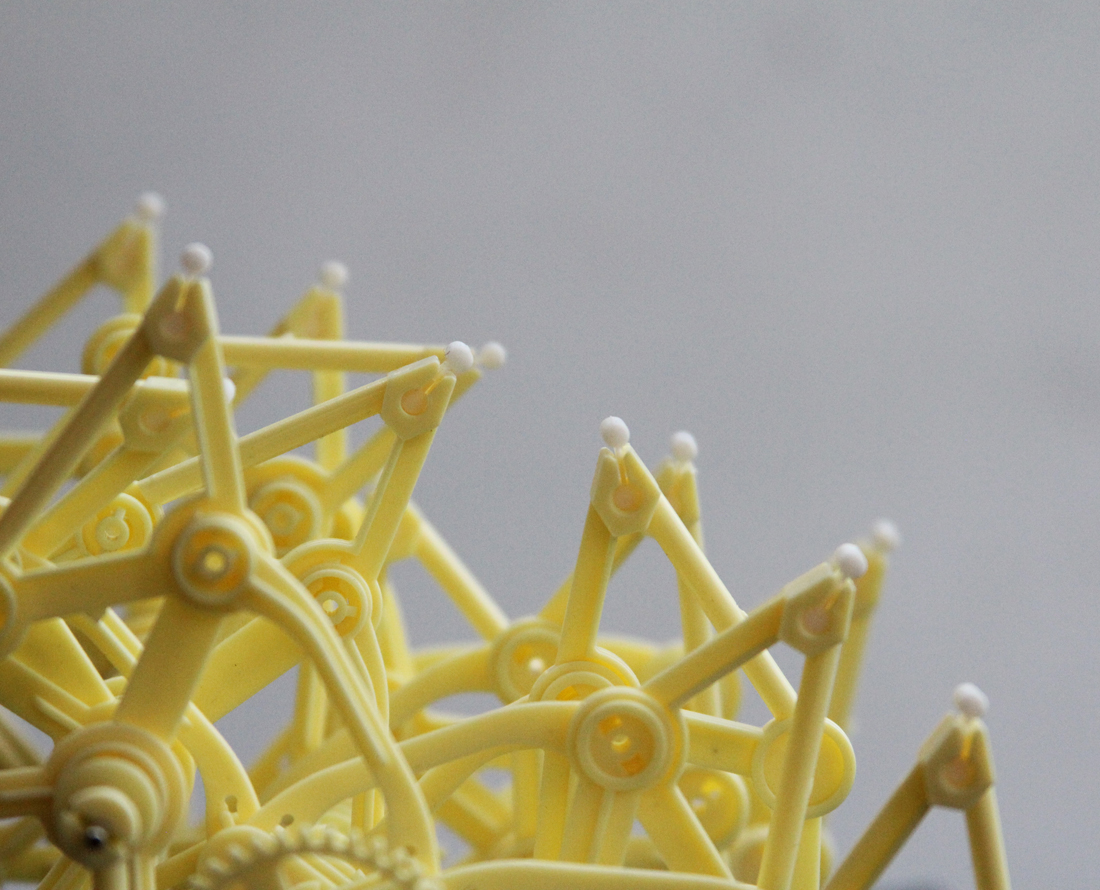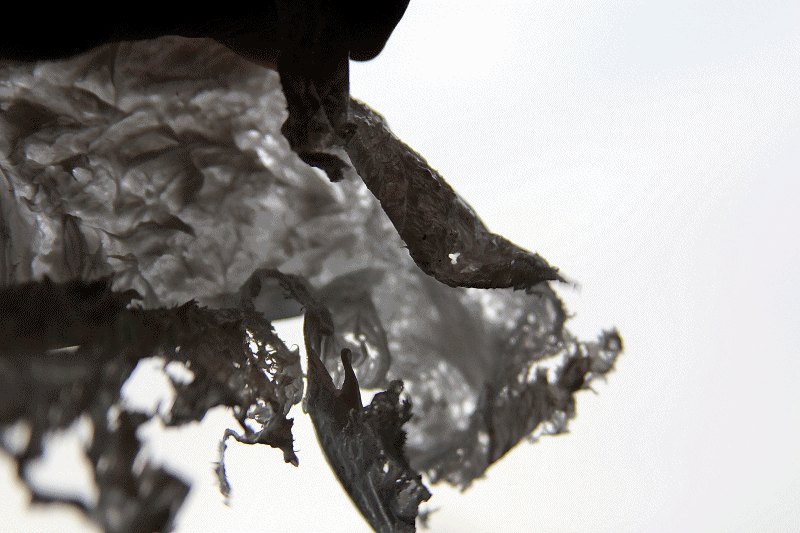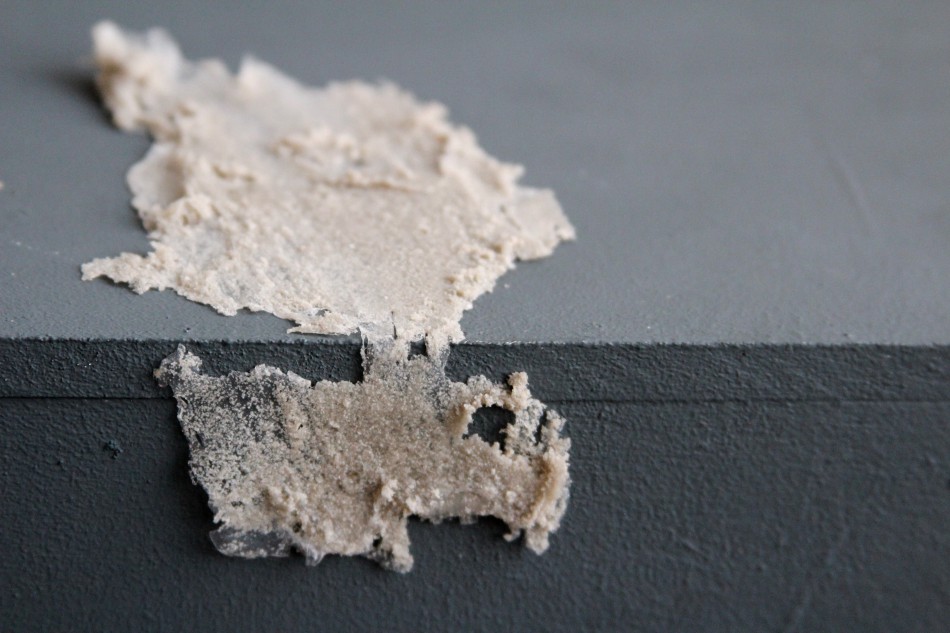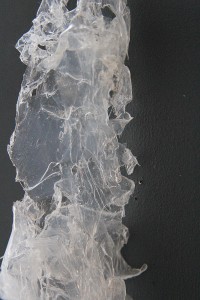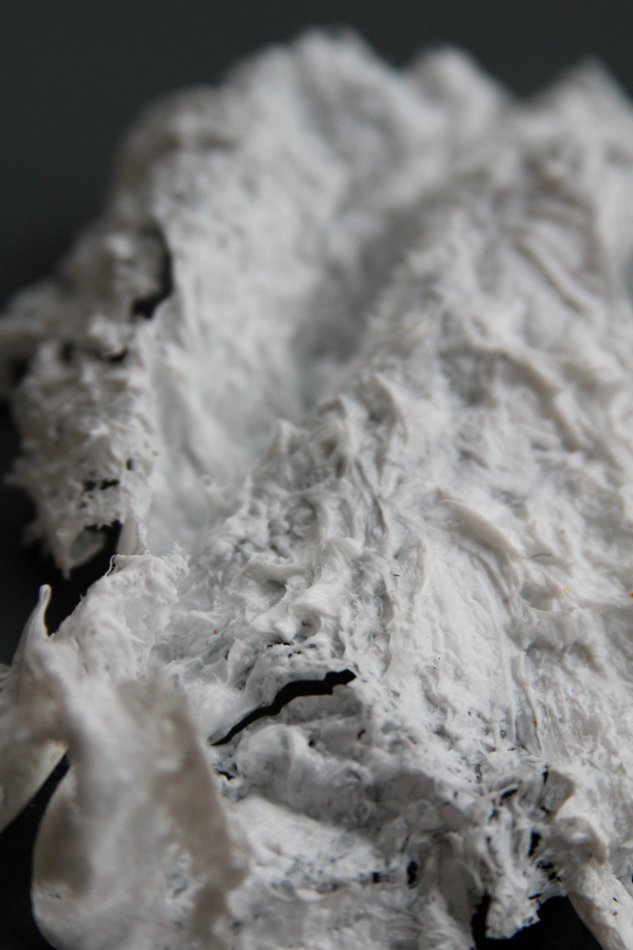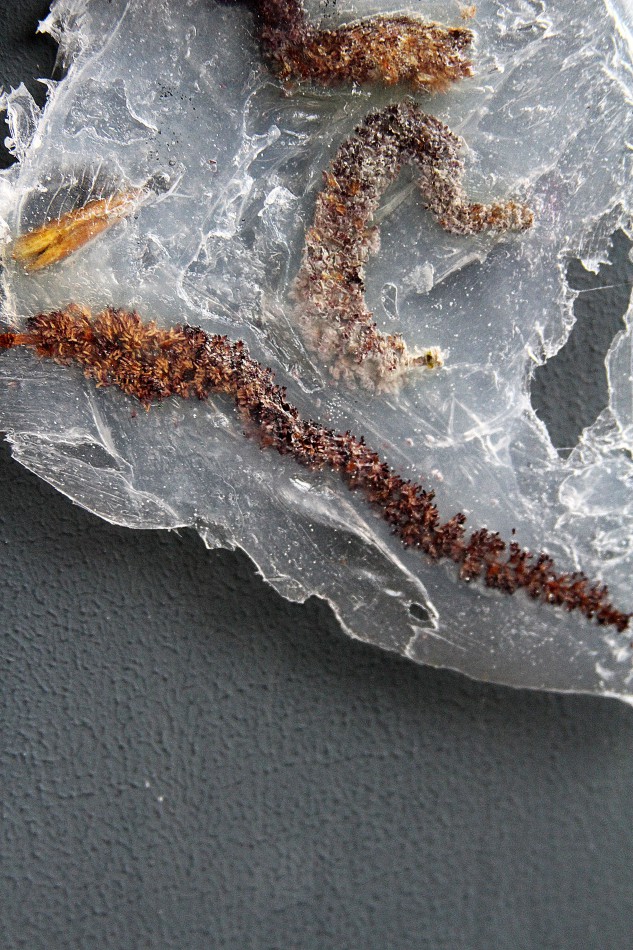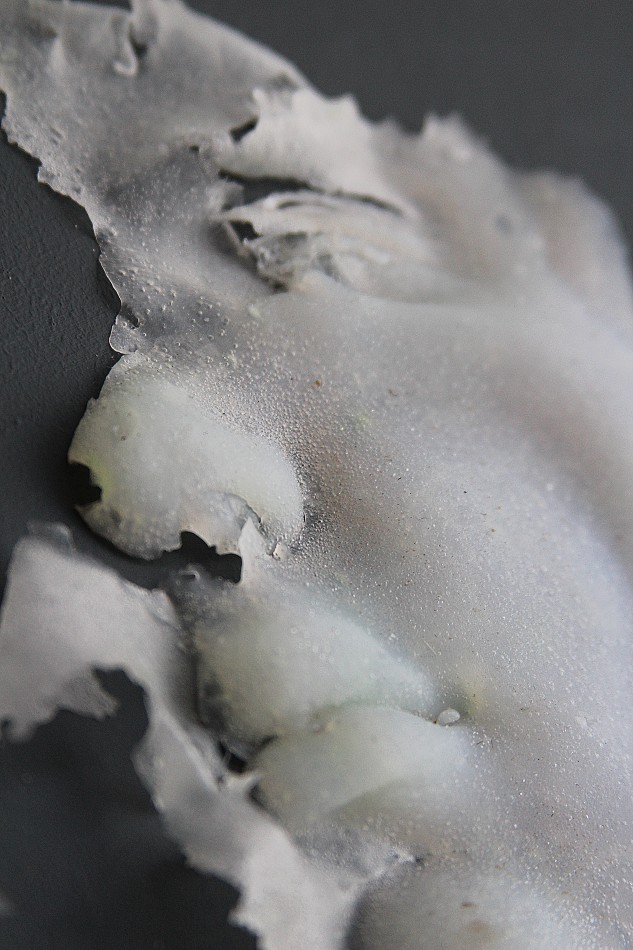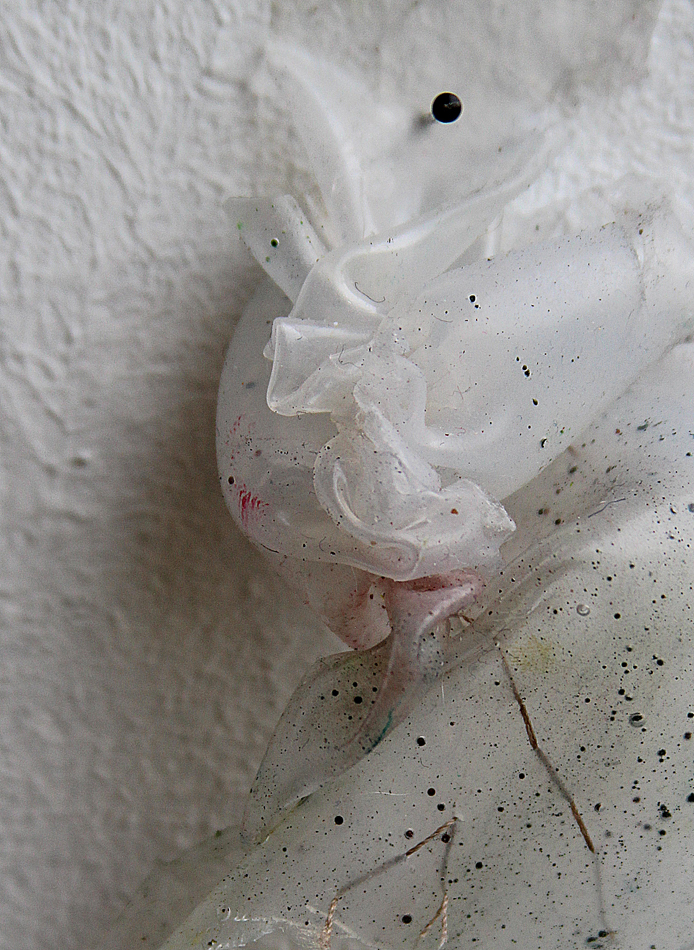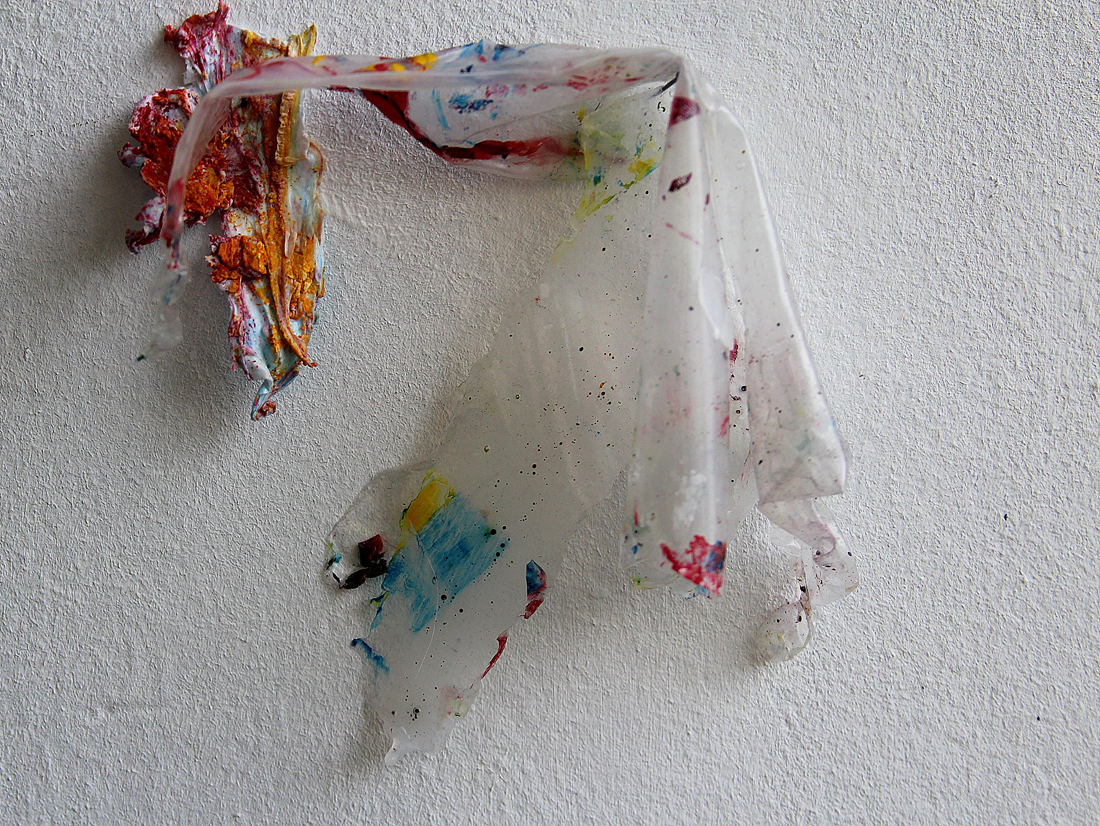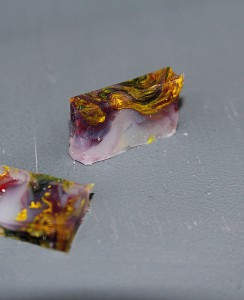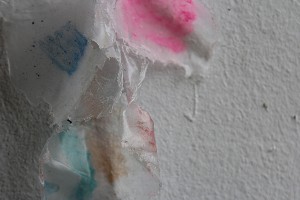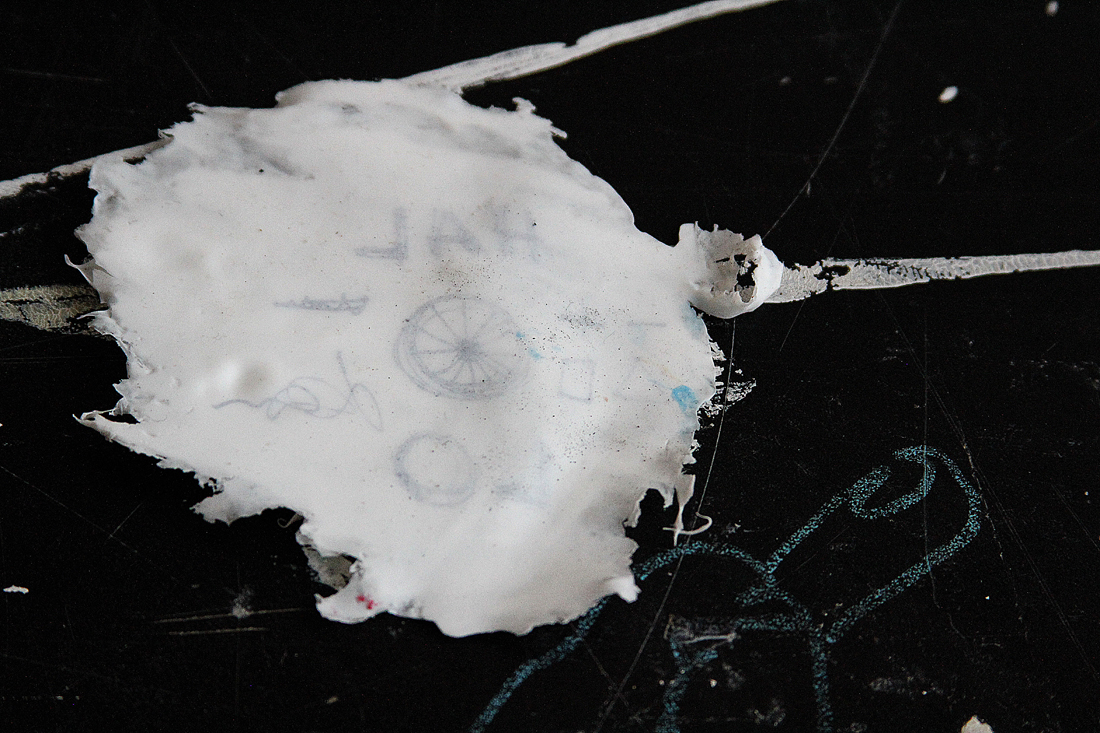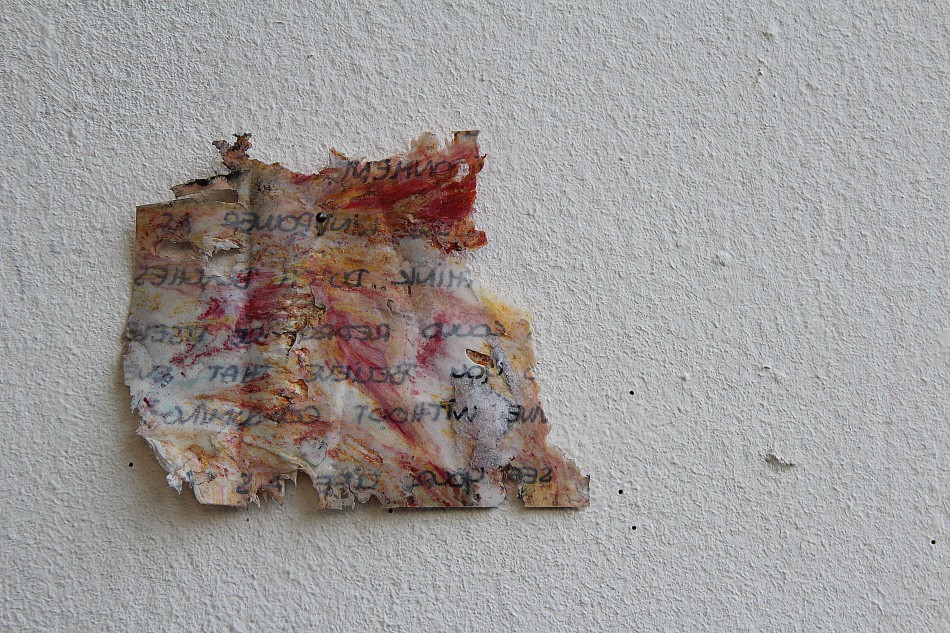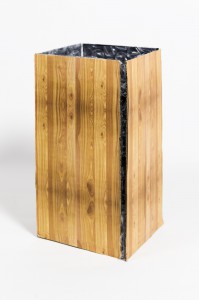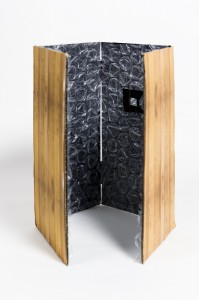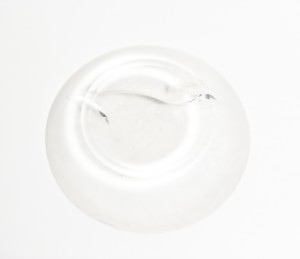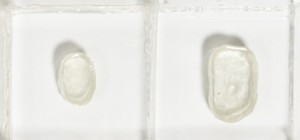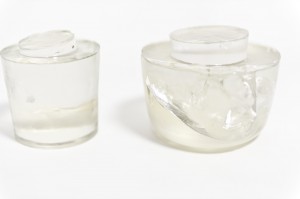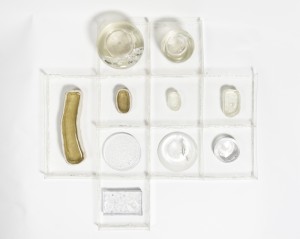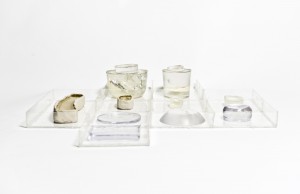The starting point of my research was Fulvio Bianconi’s Pezzato Vase. The Vase that displayed in the Stedelijk Base (fig. 1) was designed in 1950-1951 and acquired by the Museum in 2002 from the artist Tomas Rajlich. The Pezzati series [Pezza (it.) – patch] was designed between 1950-1954 and produced by Venini & C., a Murano glass manufacturer.
I started my research by looking up books about Bianconi in “WorldCat”, an Internet-based books catalog that contains combined data from thousands of libraries around the world. Most of the relevant books about the artist that I could trace in Amsterdam were either in the Stedelijk Library or the OBA (Amsterdam public library). Besides, I searched in the Stedelijk library internet database, and with the help of its librarian, I could find a few more catalogs and books that did not come up in WorldCat. I also checked in the Rietveld library search engine, but unfortunately, no result came up. Most of these searches brought up relatively focused information about Bianconi and Venini & C.
Later I started to search about Bianconi by going through the glass and crystal books collections, both at the OBA and at the Rietveld Library. Those searches brought up less specific types of books, either about design in general or glassworks.
The physical materials I found can be divided into several categories:
Exhibition Brochures
The Stedelijk library has two original Bianconi’s exhibition brochure: one from 2015 at Le Stanze del Vetro (fig.2), and the other from 1975 at Gallery Danese in Milano (fig. 3). The Danese’s brochure is the oldest physical material about Bianconi I could find in Amsterdam. It’s an envelope that contains six large postcards of the artist work and innovation to the opening in September 1975 (fig.3.a).
Venini
The book (fig. 4) and the Brochure (fig 5.) are both directly related to Bianconi’s work at Venini. The book consists of information about Bianconi’s life, but its central part presents Bianconi’s designs throughout several decades. The designs are divided by series of production (one of them , for example, is the “Pezzati”), and the objects displayed next to their drafts and numbered as in a catalog (fig. 4.a.). The Venini Brochure function both provide information about the company and service as a poster (fig. 5.a). Although it doesn’t revolve around Bianconi’s body of work, some of his designs can be identified on the poster (such as the Fazzoletto series).
Private Collectors
I also found information about Bianconi’s designs at private collectors book. The first one is Losch collection (fig. 6), a private collection that focuses on Italian and Finish Glass. The other book presents Nancy Olnick and Giorgio Spanu Venetian glass collection. Both books are not exclusively focused on Bianconi’s works and display an assortment of his designs alongside the designs of his Italian colleagues at Venini.
Glass
After going through all the books found with the help of the Libraries’ database, I checked if I could find information about Bianconi in books about glass in general. I searched in the OBA collection about Glass and Krystal, that are categorized on shelf number 775.6. Three of the books (fig. 8, 9 & 10) consists of very little data about Bianconi, while one of the consists a more in-depth look into his body of work (fig. 11).
Searching online brought up other results. Searching “Fulvio Bianconi” in Google provided around 90,000 results, and adding the word “Pezzato” narrowed the results to 12,500. The internet-based results concern mainly commercial aspects regarding the designer works and present rather little data about his life and body of work.
Many websites either sell Bianconi’s designs or providing data about future auctions and previous auctions results. The site varies from e-bay to Sotheby’s and online auction houses.
Other websites, more “institutional” ones, deliver basic information about the designer works and his life. First, the designer’s official site contains his biography and a small picture gallery of his glass and graphic works. In Venini & C., official website this information can also be found. Modern art and design museums such as the MoMA, Stedelijk Museum, Museum Boijmans, the Cooper Hewitt and the Metropolitan provide limited information about the designer works in each of the institutions own design collection.
Limited data about the designer can also be found in social media. The designers have around 900 pictures that contain his name tag on Instagram. In addition, in Venini official instagram account some go his designs can be traced. The designer has a facebook fan page that is currently not active.
Compared to the information found in books, the one found online is not as thick and much more general. In books, we can see extensive data relating to historical contexts, manufacturing processes, and the designer’s biography and full body of work. The information that can be found online Is mainly revolving around the commercial aspects of the designer’s works, focusing on his popular and “more profitable” production series.













